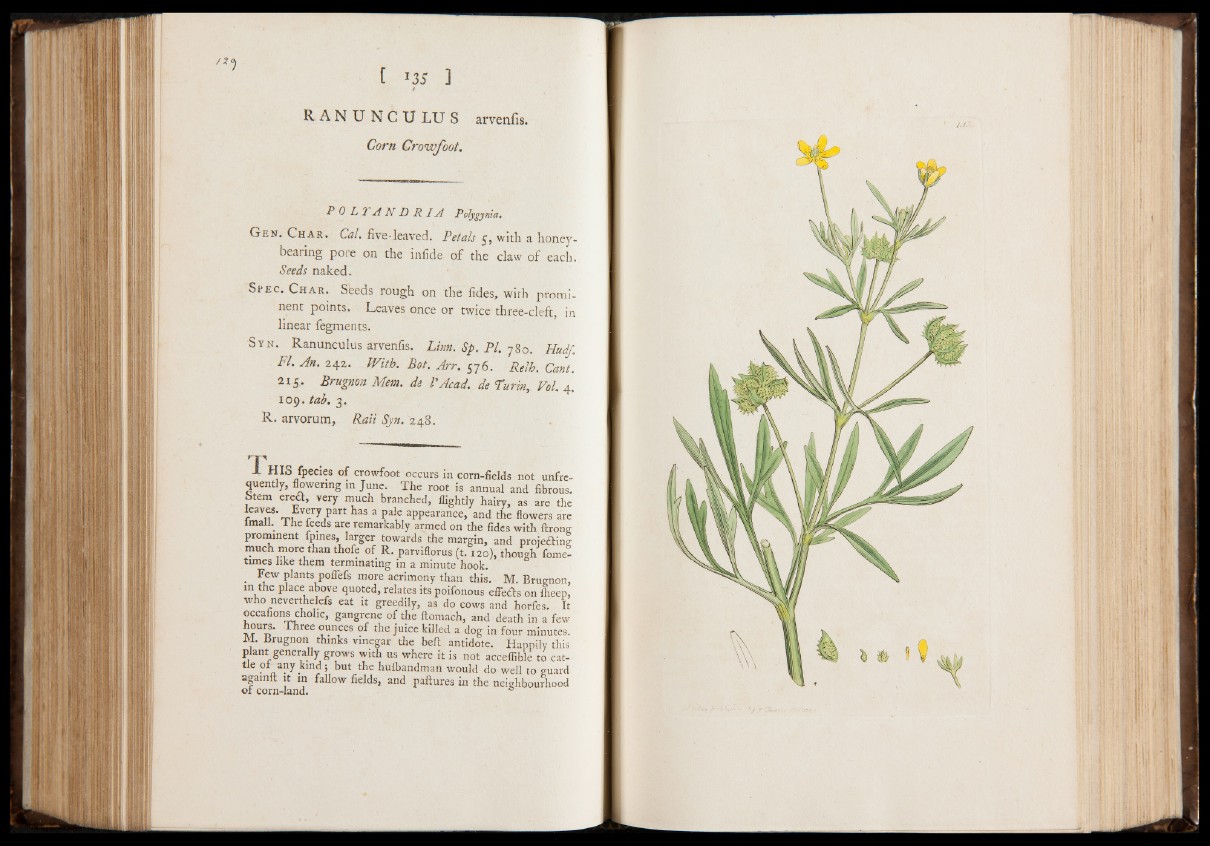
t *35 ]
R AN U NC U LU S arvenfis.
Corn Crowfoot.
P 0 L Y A N D R I A Polygynia.
Gen. Char. Cal. five-leaved. Petals 5, with a honeybearing
pore on the infide of the claw of each.
Seeds naked.
Spec. Char. Sheds rough on the fides, with prominent
points. Leaves once or twice three-cleft, in
linear fegments.
Sy n. Ranunculus arvenfis. Linn. Sp. PI. 780. HudJ.
FI. An. 242. With. Bot. Arr. 576. Relh. Cant.
2x5,. Brugnon Mem. de VAcad, de Turin, Vol. 4.
109. tab. 3.
R. arvorum, Raii Syn. 248.
rr^
1 HIS fpecies of crowfoot occurs in corn-fields not unfre-
quently, flowering in June. The root is annual and fibrous.
Stem erea, very much branched, ilightly hairy, as are the
leaves. Every part has a pale appearance, and the flowers are
imall. lh e feeds are remarkably armed on the fides with ftrong
prominent fpmes, larger towards the margin, and projeaing
much more than thofe of R. parviflorus (t. 120), though fome-
times like them terminating in a minute hook.
. Few plants poffefs more acrimony than this. M. Brugnon,
m the place above quoted, relates its poifonous effects on Iheep,
who neverthelefs eat it greedily, as do cows and horfes. It
occafions cholic, gangrene of the ftomach, and death in a few
hours. Three ounces of the juice killed a dog in four minutes.
M. Brugnon thinks vinegar the belt antidote. Happily this
plant generally grows with us where it is not acceffible to cat-
tle of any kind; but the hulbandman would do well to g u a rd
again it in fallow fields, and paftures in the neighbourhood
of corn-land. 0